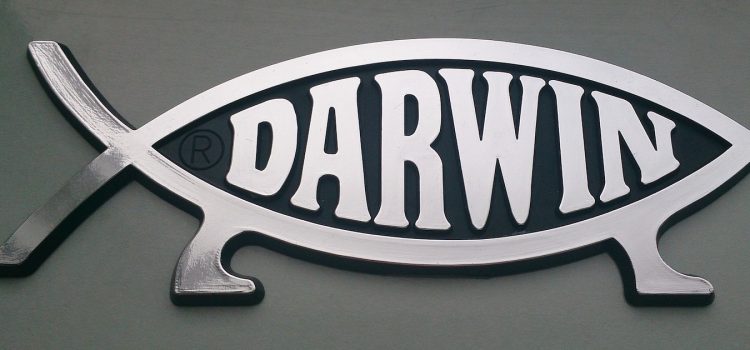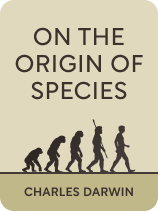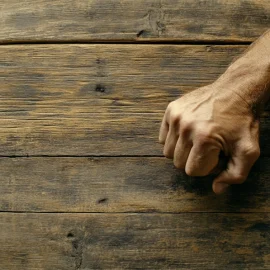

This article is an excerpt from the Shortform book guide to "On the Origin of Species" by Charles Darwin. Shortform has the world's best summaries and analyses of books you should be reading.
Like this article? Sign up for a free trial here.
Since we now have complex organisms, why are there still simple ones? Where are all the intermediate species?
From the start, Charles Darwin’s theory of evolution raised eyebrows—and serious questions. In the sixth and final edition of On the Origin of Species (1872), Darwin responds to the three main objections raised by skeptics.
Read more to learn about these objections to evolution and Darwin’s rebuttals in defense of his theory.
Objection #1: “Lower” Organisms Continue to Exist
Darwin cites critics who argue that the continued existence of simple creatures challenges the claim that sophisticated organisms evolved from simpler ones. If some simple organisms evolved into more complex ones, why didn’t all of them evolve that way? Darwin provides two explanations in response to this objection to evolution.
Rebuttal 1) Natural Selection Doesn’t Always Favor Complexity
First, Darwin argues that natural selection isn’t biased in favor of sophistication. Instead, species accumulate adaptations that allow them to continue reproducing. Therefore, a “simple” organism may still be well suited to its environment. For example, biologists have estimated that the earth contains about 2.5 million times as many ants as it does humans. Even though their bodies are simple, ants are still highly successful at surviving and reproducing.
Rebuttal 2) Evolution Is a Work in Progress
Second, Darwin reminds critics that evolution is never completed and every moment in natural history is a snapshot of a work in progress. In the future, organisms may evolve to become even more sophisticated. For example, chimpanzees aren’t as intelligent as humans now, but that doesn’t mean they couldn’t reach our current level in a few million years—a relatively short time in the scale of natural history.
Objection #2: Complex Features Are Difficult to Create Through Small Increments
Darwin explains that some naturalists found it difficult to believe that very sophisticated structures could arise through small increments. Organisms today have such highly developed structures and behaviors that it’s hard to imagine a rudimentary version of them providing much value.
For example, bats hunt using echolocation. They emit high-pitched sound waves that bounce off insects and then they judge the distance and direction of the prey by listening to the echo. They do this fast enough to intercept insects in flight. That means echolocation needs to work at a high level of sophistication if it’s to work at all. It’s hard to imagine a primitive bat just making noises and then trying to follow the direction of the echo.
Darwin provides two rebuttals to this objection to evolution.
Rebuttal 1) Evolution Repurposes Older Structures
Darwin argues that highly sophisticated structures and instincts can evolve incrementally, but they’re often repurposed from earlier structures. An earlier version of a species may evolve a structure for one purpose. Then, the organism finds a new use that allows the structure to continue evolving into greater complexity and sophistication.
Let’s return to the echolocation example. To echolocate, bats need highly sensitive directional hearing and the ability to make high-frequency sounds. These could’ve developed independently of each other before being repurposed into an echolocation system.
Bats may have started off like other nocturnal predators, such as owls, that hunt using highly sensitive directional hearing. They may also have communicated with each other using ultra-high-frequency squeaks that predators can’t hear, as many small rodents do today. Once early bats derived even a small advantage from using these abilities together in echolocation, evolution could then incrementally improve on this new usage.
Rebuttal 2) The Natural World Shows Incremental Development of Complex Structures
Furthermore, Darwin argues that when we look at simpler organisms, we often find earlier versions of rudimentary structures that developed into much more complex structures over time. For example, the human brain is so complex that scientists are still discovering how it works. However, by understanding that the brain is a centralized collection of nerve cells in communication with each other, we can find the simplest examples of this structure in nature to reveal how it may have developed over time.
One of the simplest nerve cell structures belongs to jellyfish, whose nerve cells connect in a “net” that senses and processes information. One step up from this we find hydras, small freshwater relatives of sea anemones. These creatures also have a nerve net, but their nerve cells are more specialized, giving them something closer to a brain. Finally, in flatworms, these specialized nerve cells cluster together, forming a simple brain that can make decisions and even remember previous actions. By looking at these simple organisms, we can infer the origins of something as complex as a human brain.
Objection #3: Why Aren’t There More Transitional Species?
Lastly, Darwin’s critics argued that if species evolved from other species, then there should be more transitional species alive, or at least more evidence of them in the geological record. Darwin provides three rebuttals to this objection to evolution.
Rebuttal 1) Competition Destroys Transitional Species
Darwin argues that we don’t see many transitional species alive today because competition between species would select against them. Recall that scarcity of food, habitat, and other resources puts species in competition with each other. Those that have evolved the best adaptations outcompete those that are less adapted. Therefore, transitional species are likely to die out.
For example, let’s say there’s a fish that eats two kinds of food: algae and smaller fish. Some of the fish in this population develop a mutation that gives them teeth that can scrape algae off coral, which allows them to eat algae faster. Others develop long, sharp teeth that allow them to catch small fish better. The optimized algae eaters eat most of the available algae, while the optimized fish hunters catch most of the available small fish. Now there’s less to eat for the parent population, which is optimized for neither algae nor small fish. They’ll likely die off, leaving two new species of fish.
Rebuttal 2) The Fossil Record Is Scarce
Darwin also explains that we don’t find every example of a transitional species in the fossil record because the fossil record is very sparse. Most organisms never become fossils because fossilization is a rare process that requires very specific conditions. Our knowledge of the natural world before our time is very limited. Therefore, Darwin argues, the lack of transitional species in the fossil record poses little challenge to the theory of evolution.
Rebuttal 3) Transitional Adaptations Still Appear in Modern Species
Finally, Darwin argues that even though examples of transitional species may be sparse, we can still infer the course of evolution by studying the incremental adaptations in today’s natural world. Let’s say we want to understand how whales evolved to swim, even though their ancestors walked on land. You could infer this evolutionary path by looking at the behavior of current aquatic and semi-aquatic mammals.
For example, raccoons and bears spend most of their time on land, but they occasionally venture into rivers to catch food. Muskrats and beavers spend even more time in the water. Seals and walruses spend most of their time underwater, but they occasionally pass time on the shore. Finally, whales and dolphins spend all of their time in the sea. You could easily imagine the ancestors of modern whales progressively occupying each of these niches before finally leaving the land. While we may never discover every intermediate species, Darwin argues that the natural world as it currently is furnishes more than enough evidence to support the evolution of one species into another.

———End of Preview———
Like what you just read? Read the rest of the world's best book summary and analysis of Charles Darwin's "On the Origin of Species" at Shortform.
Here's what you'll find in our full On the Origin of Species summary:
- Charles Darwin's theory of evolution that changed how we look at life on Earth
- The objections raised against Darwin's theory and Darwin's rebuttals
- Updates on Darwin's theories from contemporary biology






